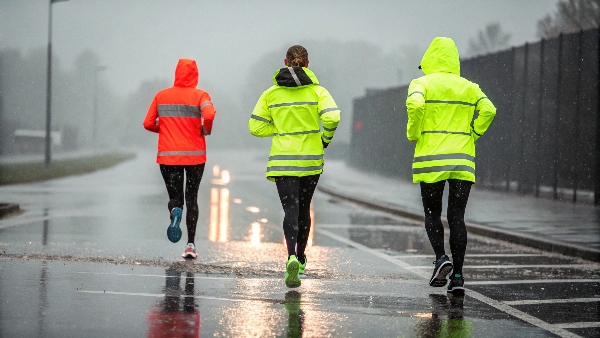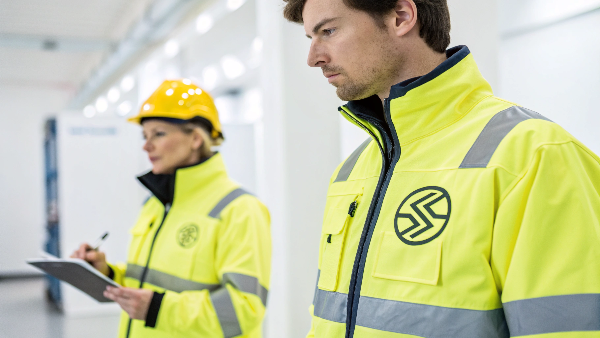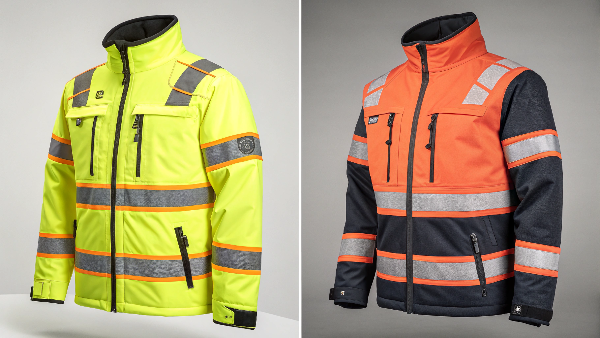Construction work is tough. Serious injuries happen often. The right PPE keeps you safe on site.
Construction workers use high visibility clothing, hard hats, safety glasses, gloves, safety shoes, hearing protection, fall harnesses, and respirators. Proper fit is crucial for protection and safe job performance.
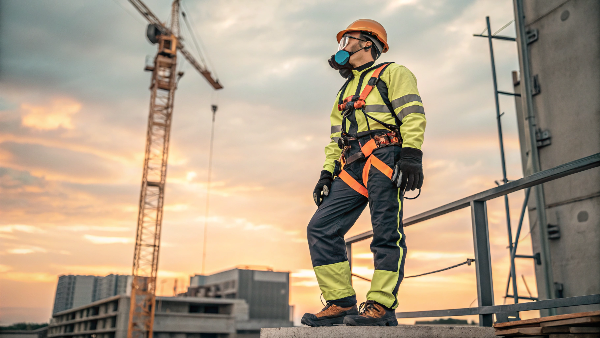
Understanding what PPE is needed is just the first step. It's about more than just having the gear; it's about using it correctly. Let's look closer at specific types and why they are so important for staying safe. We'll explore common questions workers and safety managers, like my long-time client Danny Cheng, often ask. This knowledge helps everyone make better safety choices.
What PPE is used in construction industry?
Not sure what PPE construction requires? Using the wrong gear can lead to accidents. Let's list the essential items every worker needs.
Construction PPE includes head, eye, hand, foot, and respiratory protection, plus high-visibility clothing and fall arrest systems. Each piece guards against specific site hazards, ensuring worker safety.
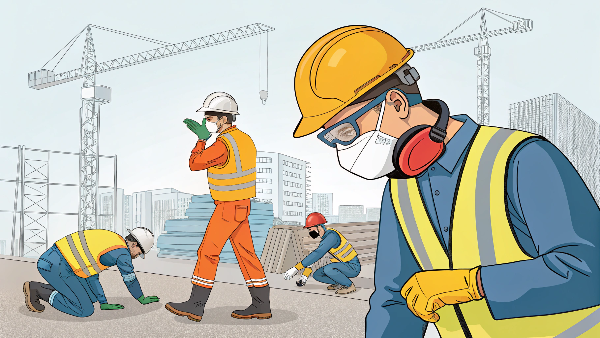
When I think about the range of PPE, it’s quite extensive. At Vissafety, we specialize in high visibility clothing1, but I know from my 12 years working with Danny Cheng that his clients in North America need a full suite. Danny supplies construction, logistics, and manufacturing sectors, and they all have unique demands. He always emphasizes gear that meets standards like ANSI/ISEA 107 for high-vis clothing. It's not just about having PPE; it's about having the right PPE that's certified and fits well. Poorly fitting or non-compliant gear can be as dangerous as no gear at all. We ensure our designs offer both safety and comfort, because PPE that isn't worn is useless.
Here’s a quick breakdown of common categories:
| PPE Category | Examples | Primary Purpose |
|---|---|---|
| Head Protection | Hard hats, helmets | Impact from falling/flying objects |
| Eye & Face Protection | Safety glasses, goggles, face shields | Debris, chemicals, radiation |
| Hearing Protection | Earplugs, earmuffs | Noise reduction |
| Respiratory Protection | Disposable masks, respirators with cartridges | Dust, fumes, vapors, gases |
| Hand Protection | Various gloves (cut-resistant, chemical, etc.) | Cuts, abrasions, chemicals, burns |
| Foot Protection | Safety-toed boots, puncture-resistant soles | Impact, compression, punctures |
| High-Visibility | Vests, jackets, trousers with reflective tape | Being seen by vehicle operators |
| Fall Protection | Harnesses, lanyards, anchors | Preventing or arresting falls |
What are the 7 PPE?
Heard about the '7 essential PPEs'? Confused if it's a strict list? We'll break down this common set of protective gear.
The common '7 PPEs' in construction often refer to hard hats, safety glasses, gloves, safety shoes, high-visibility vests, hearing protection, and respirators or fall arrest systems.
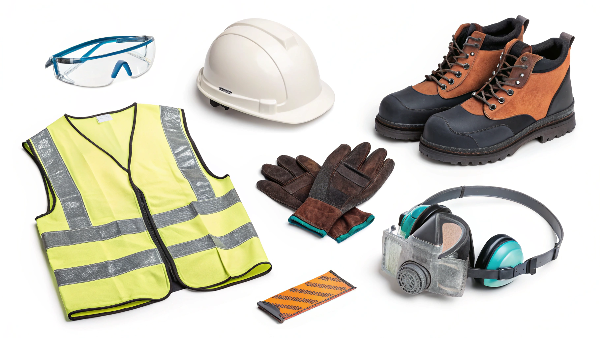
The "7 PPEs2" list is a handy way to remember the core safety items. While the exact seventh item can sometimes vary by site or specific job task (often alternating between respiratory protection and fall arrest systems depending on the immediate hazard), the first six are fairly standard. I’ve seen how focusing on these essentials helps companies like Danny's streamline their safety training and supply. For example, our Vissafety high-visibility vests directly address one of these critical areas. Danny often tells me his clients appreciate this clear checklist approach. It simplifies safety talks and ensures everyone on site has a baseline level of protection.
Here’s a common understanding of these seven:
- Hard Hats: Protects from falling objects and impacts.
- Safety Glasses/Goggles: Shields eyes from debris, dust, and splashes.
- Gloves: Protects hands from cuts, abrasions, chemicals, and temperature extremes.
- Safety Shoes/Boots: Protects feet from impact, compression, and punctures.
- High-Visibility Vest3: Ensures workers are seen by vehicle and equipment operators. This is our specialty at Vissafety, meeting standards like EN ISO 20471 and ANSI/ISEA 107.
- Hearing Protection4 (Earplugs/Earmuffs): Protects against loud noises common on construction sites.
- Respiratory Protection OR Fall Arrest System: Depending on the primary risks of the job site.
What are the safety equipment used in construction?
Is 'safety equipment5' just PPE? This term can be broader. Let's clarify what it covers on a construction site to avoid confusion.
Safety equipment in construction includes Personal Protective Equipment (PPE)6 like helmets and vests, plus items like safety harnesses, barricades, first aid kits, and fire extinguishers. It's a broad category.
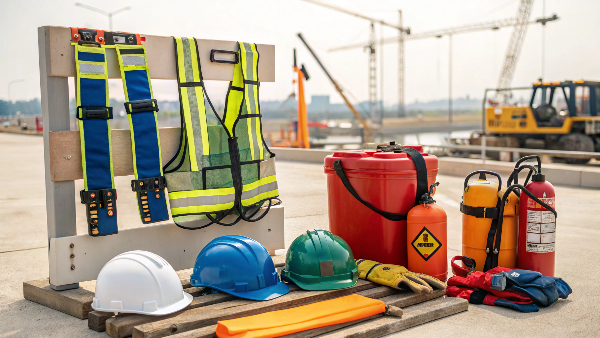
It's important to make a distinction here. PPE, like the high-visibility clothing we manufacture at Vissafety, is worn by the individual. It's the last line of defense. But "safety equipment" is a wider term. It also includes collective protective measures7 and emergency gear. For example, guardrails on a scaffold are safety equipment, not PPE. Fire extinguishers, first aid stations, safety signage, and lockout/tagout devices are all crucial pieces of safety equipment. I always remind clients like Danny Cheng that our high-quality PPE works best as part of a comprehensive site safety system. This system includes these broader pieces of equipment that protect everyone on site, often by engineering out hazards or providing emergency response capabilities. Effective safety programs integrate both personal and collective protective measures.
PPE vs. Collective Protection
Collective protection aims to protect multiple people simultaneously (e.g., safety nets, guardrails). PPE protects the individual.
Examples of Non-PPE Safety Equipment:
- Guardrails and barriers
- Safety nets
- Warning signs and lights
- First aid kits
- Eyewash stations
- Fire extinguishers
- Emergency communication systems
What is 6 point PPE for construction?
Now a '6-point PPE' system? It can be confusing. Let's see what this usually refers to on construction sites and how it simplifies things.
A '6-point PPE' system typically covers head, eyes, ears, hands, feet, and high-visibility clothing. It's a practical checklist for ensuring essential body protection on site.
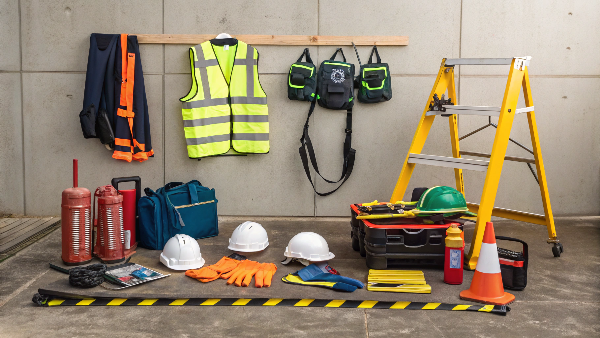
The '6-point PPE' concept is often used as a quick daily check, a mental shortcut for workers and supervisors. It covers the most commonly needed and visible items. When I discuss safety protocols with clients, some prefer this streamlined approach for toolbox talks because it's easy to remember.
The six points usually are:
- Head Protection: Hard hat.
- Eye Protection: Safety glasses or goggles.
- Hearing Protection: Earplugs or earmuffs.
- Hand Protection: Appropriate gloves.
- Foot Protection: Safety boots.
- Body/High-Visibility Protection: Typically a high-visibility vest or jacket. This is where Vissafety's products shine.
Compared to the '7 PPEs', this list often groups respiratory protection or fall arrest under more specific risk assessments rather than a daily universal check, unless those hazards are always present. For us at Vissafety, our high-visibility clothing is a key component of this 6-point system, ensuring workers are visible and protected, fulfilling the "body protection" aspect critical for preventing accidents with moving vehicles and equipment.
What is the minimum PPE for construction?
What's the bare minimum PPE? Skimping on safety is never an option. Let's define the non-negotiable basics for construction sites while stressing risk assessment.
The minimum PPE for construction typically includes a hard hat, safety footwear, high-visibility clothing, and eye protection. However, a site-specific risk assessment always dictates the full requirements.
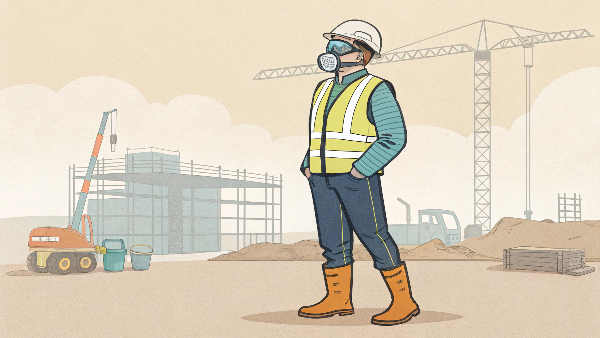
I always stress that "minimum" PPE is fundamentally determined by a thorough risk assessment of the specific job and site. However, there's a generally accepted baseline for almost any construction environment. This usually includes:
- Hard Hat: Essential for protection from falling debris or overhead impacts.
- Safety Footwear: Steel-toed boots to protect against impact and compression, often with puncture-resistant soles.
- High-Visibility Clothing: Usually a vest, crucial for ensuring workers are seen, especially around moving vehicles or equipment. This is a non-negotiable for many of Danny Cheng's clients, and he relies on Vissafety for ANSI/ISEA 107 compliant vests.
- Eye Protection: Safety glasses or goggles to guard against flying particles.
Beyond this baseline, additional PPE is required based on identified hazards. For example, if there's excessive noise, hearing protection becomes minimum. If there's a risk of falls from height, a fall arrest system is mandatory. It’s about adapting to the environment. We at Vissafety make sure our high-visibility gear meets these "minimum" expectations for visibility and durability, forming a reliable part of any construction worker's essential kit.
What not to wear on a construction site?
Wearing the wrong thing on site? Everyday clothes can be dangerous. Let's cover what attire you absolutely should avoid to prevent accidents.
Avoid loose clothing, dangling jewelry, open-toed shoes, shorts (on many sites), and non-protective eyewear on construction sites. These items can cause entanglement or offer no protection.
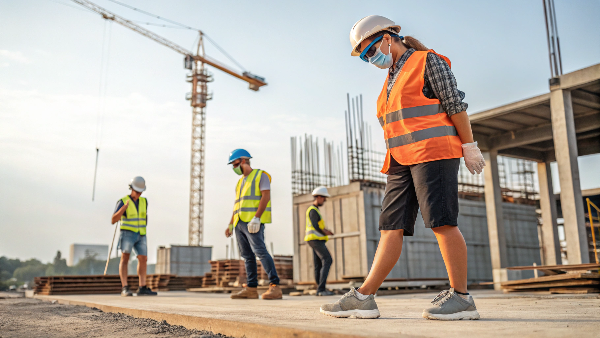
It might seem like common sense, but I've heard stories from Danny Cheng about near-misses caused by inappropriate attire. What you don't wear is just as important as what you do wear. Loose clothing, like baggy shirts or untucked drawstrings, can easily get caught in machinery or on protruding objects. This is a stark contrast to the properly fitted safety garments we design at Vissafety, where we focus on safety and functionality, ensuring no loose parts create an extra hazard. Dangling jewelry, including rings, necklaces, and bracelets, poses similar snagging risks and can conduct electricity. Open-toed shoes like sandals or flip-flops offer zero protection for feet. Many sites also prohibit shorts due to the risk of cuts, abrasions, and exposure to harmful substances. Regular prescription glasses or sunglasses are not a substitute for certified safety eyewear.
Here's a simple guide:
| Do NOT Wear | Wear Instead | Why the Concern? |
|---|---|---|
| Loose, baggy clothing, uncontained long hair | Well-fitting workwear, hair tied back/contained | Snagging, entanglement |
| Dangling jewelry (rings, necklaces, etc.) | No jewelry or only medical alert items tucked in | Snagging, conductivity, degloving risk (rings) |
| Open-toed shoes, sneakers, casual shoes | Certified safety footwear | No impact, puncture, or slip protection |
| Shorts (on many sites) | Durable work trousers | Lack of leg protection from cuts, debris, sun |
| Regular eyeglasses/sunglasses | ANSI-rated safety glasses/goggles | No impact protection |
What are examples of PPE according to OSHA?
Need OSHA's take on PPE? Ignoring their guidelines can lead to hefty fines and, more importantly, put workers at risk. Let's look at examples they provide.
OSHA examples of PPE include safety glasses, hard hats, safety shoes, gloves, respirators, and protective clothing like high-visibility vests. Employers must provide these based on workplace hazards.
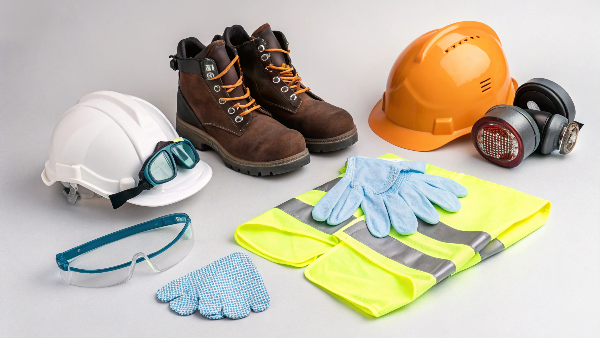
OSHA (Occupational Safety and Health Administration) provides clear guidelines on PPE. Their regulations are a cornerstone for safety in the U.S., and clients like Danny Cheng are acutely aware of the need for compliance. OSHA doesn't just list PPE; it mandates that employers assess workplace hazards and select, provide, and ensure the use of appropriate PPE at no cost to employees.
Examples directly from OSHA guidance often fall into these categories:
- Eye and Face Protection: Safety glasses, goggles, face shields for hazards like flying particles, molten metal, chemical splashes.
- Head Protection: Hard hats for falling objects or bumping hazards.
- Foot Protection: Safety shoes or boots for falling/rolling objects, sharp objects.
- Hand Protection: Gloves for exposure to cuts, burns, chemicals, or temperature extremes.
- Respiratory Protection: Respirators for harmful dusts, fogs, fumes, mists, gases, smokes, sprays, or vapors.
- Body Protection: This can include lab coats, coveralls, and, very importantly in construction, high-visibility safety apparel. Vissafety's ANSI/ISEA 107 compliant garments help companies meet OSHA's expectations for worker conspicuity. Ensuring workers are visible, especially around moving vehicles and equipment, is a key part of OSHA's focus on preventing "struck-by" incidents.
What are the 8 types of PPE?
Hearing about '8 types of PPE' now? These lists can seem to change. We'll clarify this common way of categorizing safety gear for a full overview.
The '8 types of PPE' often refer to eye/face, head, foot, hand, respiratory, hearing, body (like high-visibility vests8), and fall protection9. This comprehensive list covers most construction hazards.
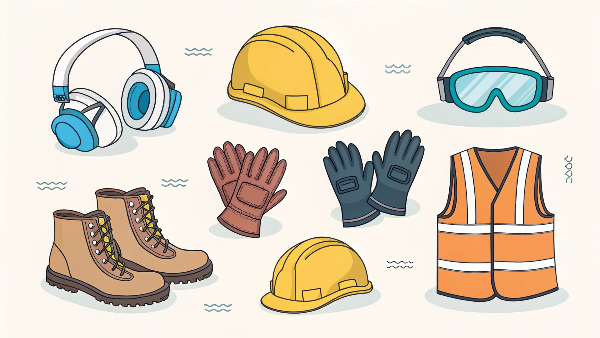
This '8 types of PPE' list offers a very comprehensive framework for thinking about worker protection. It’s a slight expansion or more detailed breakdown compared to the '7 PPEs' or '6-point' lists. When I work with clients like Danny, who are supplying diverse construction roles, this more granular approach helps in conducting thorough safety audits and ensuring all potential hazards are considered.
Here's how these 8 types are typically categorized:
- Eye and Face Protection: Safety glasses, goggles, face shields.
- Head Protection: Hard hats and helmets.
- Foot Protection: Safety-toed and puncture-resistant footwear.
- Hand Protection: A wide variety of gloves for different tasks.
- Respiratory Protection: From simple dust masks to supplied-air respirators.
- Hearing Protection: Earplugs and earmuffs.
- Body Protection: This includes chemical-resistant suits, aprons, and crucially for construction, high-visibility clothing. Our Vissafety garments are a prime example for this category.
- Fall Protection: Harnesses, lanyards, lifelines, and anchor points.
This categorization ensures that nearly every part of the body and major hazard types are considered. For us at Vissafety, it reinforces the importance of specialized gear like our high-visibility apparel, which specifically addresses the critical need for conspicuity under the 'Body Protection' umbrella.
Conclusion
Choosing and using the right PPE is vital for construction safety. It protects workers from many hazards, ensuring they go home safe every day.
-
Understanding the standards for high visibility clothing is crucial for ensuring safety on construction sites. Explore this link to learn more about compliance and best practices. ↩
-
Explore this link to understand the importance and variations of the 7 PPEs in ensuring safety on construction sites. ↩
-
Learn about the standards and benefits of high-visibility vests to enhance safety in construction environments. ↩
-
Discover the critical role of hearing protection in preventing noise-induced hearing loss in construction workers. ↩
-
Safety equipment encompasses a wide range of tools and gear essential for construction site safety. Learn more about its various components. ↩
-
Understanding PPE is crucial for ensuring safety on construction sites. Explore this link to learn more about its importance and types. ↩
-
Collective protective measures are vital for protecting multiple workers at once. Discover more about these essential safety strategies. ↩
-
Explore how high-visibility vests enhance safety in construction environments, ensuring workers are seen and protected. ↩
-
Learn about essential fall protection practices to keep workers safe on construction sites, a critical aspect of PPE. ↩

